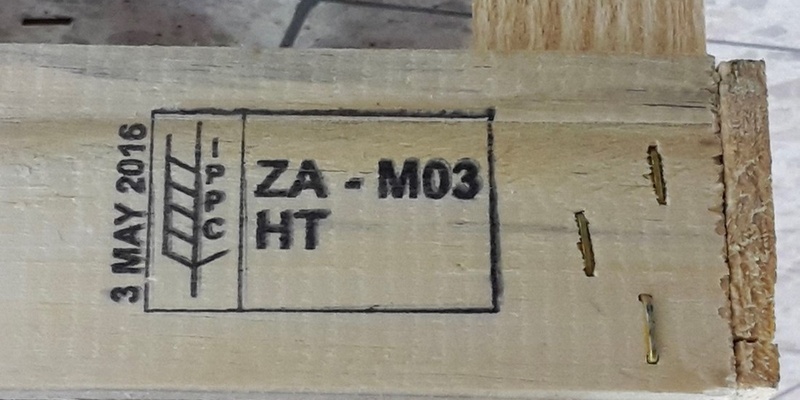IPPC publishes new guide on wood packaging material
Posted on Wed, 03 May 2023, 09:48

ISPM 15 mark on wood packaging material © T. Schroeder, BMEL, Germany
Rome, 3 May 2023. The International Plant Protection Convention (IPPC) has published the new Guide to Regulation of Wood Packaging Material which is seen to help countries better manage the introduction and spread of plant pests through the international movement of goods.
Around 80 percent of all consignments moving in global trade include some type of wood packaging material (WPM), such as pallets, crates, drums, dunnage and other wooden units that are used to secure, protect or assist in the movement of cargo or a commodity.
Wood packaging is a potential pathway for the introduction and spread of pests, particularly species that could have negative impacts on living trees and forest ecosystems. The issue is further complicated by the fact that WPM may be used by many industries and can be associated with any imported consignment, including those containing goods that would not normally be subject to phytosanitary intervention.
The IPPC and phytosanitary experts developed the International Standard for Phytosanitary Measures (ISPM) 15 or the Regulation of wood packaging material in international trade to offer countries a harmonized approach by which they may address the pest risk posed by the international movement of WPM.
ISPM 15 describes phytosanitary measures to protect forests from quarantine pest introductions, but also facilitates trade by replacing the need for phytosanitary certificates with a globally recognized mark. This ISPM 15 mark may only be applied to WPM that has been treated in accordance with the standard. Implementation of ISPM 15 is considered to significantly reduce the introduction and spread of pests and subsequently their negative impacts on both cultivated and natural forests.
The newly published IPPC Guide provides comprehensive information to improve the understanding and implementation of ISPM 15. It provides practical guidance to help national plant protection organizations apply the phytosanitary measures that are currently approved in ISPM 15 and describes the procedures required to produce compliant wood packaging material. The IPPC Guide is designed to provide relevant information to ISPM 15 treatment providers, wood packaging material manufacturers, repairers and remanufacturers and other stakeholders, to help them to improve compliance with ISPM 15 and reduce the incidence of quarantine pests. The Guide provides a wealth of information on approved treatment options for wood packaging material, applying the ISPM 15 mark, manufacturing, repairing and reusing wood packaging material, import-inspection procedures, and phytosanitary actions in response to ISPM 15 non-compliance.
By including several case studies, the IPPC Guide also highlights the diverse ways that countries have approached some of the challenges associated with implementing ISPM 15. These include raising public and industry awareness, registering ISPM 15 treatment providers, enhancing compliance, using generic heat treatment schedules and managing ship-borne dunnage.
Faith Ndunge, IPPC Implementation Committee representative for Africa, expressed her thoughts upon seeing the publication of the guide, stating, “This newly published resource is a valuable addition to the library of IPPC guides and training materials. It provides practical information and recommends best practices to support national plant protection organizations in effectively implementing ISPM 15. By doing so, it helps mitigate the risk of spreading forest pests and facilitates trade in goods transported using wood packaging material.
“On behalf of the Implementation Committee, I wish to thank the working group members and reviewers who contributed to the development of this much anticipated IPPC Guide,” she added.
The IPPC Guide to Regulation of wood packaging material can be downloaded through this link.
Related information:

